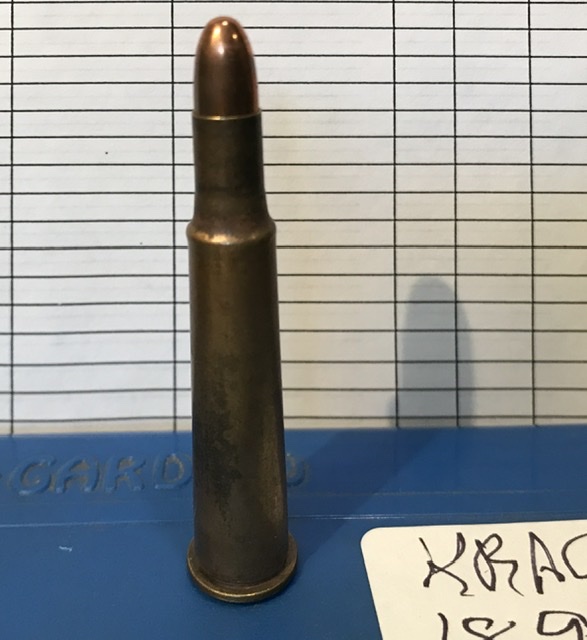Returning to loading after a long hiatus (1981 to present - how time flies) I have found these many pages in the KCA Forum to be most helpful. I was taken by the suggested load as referenced ButlersRangers, 110grain RN over 26gr of IMR-4198 = `2000fps. I loaded a small number as a test and was satisfied my rifle seemed happy.
Now I am loading the rest of the box of bullets in my collection of old brass. Turning to a box, ~50 rnds, of headstamp WRA Co. .30 ARMY all was well until it wasnt. The photo will show the cause of my concern. I pulled this round out of the press and the first thought was, it reminds me of a zoot suit! Granted, there may not be many left who will understand the so I will say - flared shoulders.
This particular round measures 0.433 while the SPEER reference dia. is 0.4190 as is the Sierra. After three more cases exhibited similar but not as drastic deformation I thought I might need to clean out the case necks to ease the bullet home. Meanwhile the other part of my brain mulled over the implications. Should I try to chamber these rounds and fire form? But would the case fail, leaving me with a real mess - at least? Perhaps I should break them down, save the powder and bullet and try to pop the primer at the range followed by full length resizing the case.
Or is there another explanation I havent considered? I am not sure I want to force chamber these four rounds. That seems too risky. I hope there is value in mentioning this as it may be an issue another might encounter. Are there reports of cases being too soft in the shoulder area?
I await further information and thank you in advance if you have a perspective.

